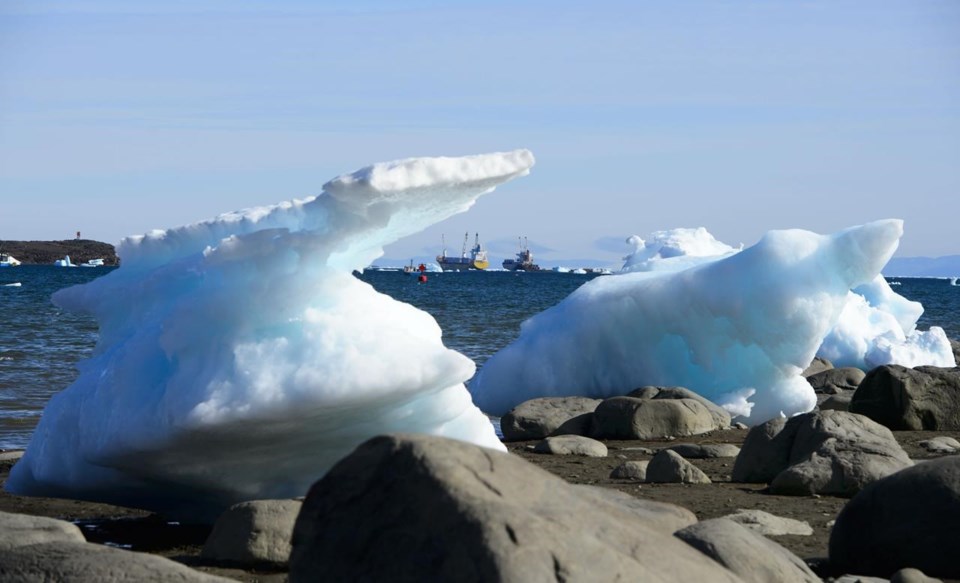The international body that regulates shipping has approved new environmental protections for the Canadian Arctic expected to reduce emissions that hasten the melting of Arctic sea ice.
At meetings that ended Friday, the International Maritime Organization agreed with a proposal from Canada to create a so-called Emissions Control Area.
"The (Marine Environment Protection Committee) has approved the establishment of ... new Emission Control Areas in Canadian Arctic waters," a release from the UN body said.
The committee is expected to give the final OK at its next meeting in the fall. The measures would enter into force 16 months after that.
The rules require ships in the Arctic to use fuel that contains less than .1 per cent sulphur, a further restriction to those already in place around the use of heavy fuel oil. It would reduce the amount of contaminants such as sulphur dioxide and nitrogen dioxide that enter the environment.
The most noticeable effect, however, may be reducing the amount of black carbon emitted by vessels sailing the North.
Black carbon is a sooty byproduct of high-sulphur fuels that falls onto sea ice, darkening its surface and speeding its melt. Black carbon is estimated to be responsible for about 20 per cent of the climate impacts from global shipping.
After final approval, the changes would bring rules for the Arctic in line with those in place for all other Canadian waters.
Canadian waters south of 60 degrees latitude are already listed as Emission Control Areas.
Switching fuels would create a one-time cost to shippers of about $3.3 million, according to documents from the federal government. That breaks down to about $41 per household if all those costs are passed along.
The Inuit Circumpolar Council, which represents Inuit people around the Arctic, applauded the announcement.
Council vice-chairwoman Lisa Qiluqqi Koperqualuk said black carbon emissions in the Arctic doubled between 2015 and 2021.
"All other ocean areas in Canada below 60 degrees have been protected by an Emission Control Area since 2013," she said. "We welcome this initiative by Canada to provide equal protections for our Inuit homeland.”
Sean Young, spokesman for the environmental group Ocean North, said the move could reduce ocean acidification and reduce the exposure of northern communities to air polllutants.
"We encourage Iceland and Greenland to follow Canada and Norway and adopt Emission Control Areas in their waters," he said in a release.
"An Atlantic-wide Emission Control Area would ensure a level playing field and ensure that shipping companies do not select routes to avoid emissions controls."
This report by The Canadian Press was first published March 22, 2024.
Bob Weber, The Canadian Press



